New products at Crocus
by Sarah - June 7th, 2009.Filed under: Crocus, New Products.
New items at Crocus

common box – ball £49.99
Position: partial shadeSoil: fertile, well-drained soilRate of growth: slow-growingOther features: contact with the sap may cause skin irritationHardiness: fully hardyA pair of these tightly rounded box spheres is excellent for flanking a set of steps, doorway or path. One of our recommended plants, they're perfect for planting in a large, well-drained, terracotta pot in a partially shady site, where the glossy, dark-green leaves provide all year foliage interest and structure.Box are happy growing in a sunny spot but the combination of dry soil and full sun may encourage poor growth and leaf scorching. If you have sandy soil it is best to keep them in a partially shady spot in the garden.Garden care: Ensure that the soil or compost is never allowed to dry out. Carefully cut back plants grown as hedges or topiary in mid- or late summer. Carry out rejuvenative pruning in late spring. After pruning apply a top-dressing of a balanced slow-release fertiliser such as blood, fish and bone (organic) or Osmacote (inorganic) around the base of the plant, ensuring that none touches the leaves or stems.Plants are supplied in black plastic pots not the terracota coloured plastic in the photograph.
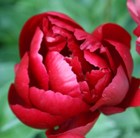
paeony / peony £19.99
Position: full sun or partial shadeSoil: fertile, moisture-retentive yet well-drainedRate of growth: averageFlowering period: May to JuneHardiness: fully hardyPrized for their blowsy, glamorous blooms and glossy, deeply cut foliage, peonies are held in deep affection by many gardeners, despite their short flowering season and vulnerability to peony wilt in damp weather. It's easy to see why. From the promise of early spring, when their red, mottled shoots push through bare earth and the handsome foliage unfurls, to early summer, when the huge flowers burst open from spherical red buds, peonies exert a fascination that few can resist. 'Buckeye Belle; has fragrant, deep red semi-double flowers from early to mid summer and dark green leaves. This lovely, early-flowering peony will thrive in full sun or partial shade. Fill the bare ground around the peony with spring bulbs to prolong the season of interest. Garden care: Deadhead after flowering. In early spring apply a top-dressing of a balanced slow release fertiliser around the base of the plant and mulch well with well rotted garden compost or manure. If the plant shows signs of collapse or the leaves become spotty, this may be a symptom of peony botrytis. Remove affected leaves immediately. In autumn, cut off all foliage and dispose of it to prevent reinfection the following spring.
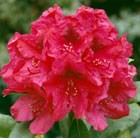
hybrid rhododendron £19.99
Position: partial shadeSoil: moist, well-drained, humus-rich, acid soil or ericaceous compostRate of growth: averageFlowering period: JuneFlower colour: redOther features: evergreenHardiness: fully hardySmall trusses of dark-crimson, funnel-shaped flowers with a black flare in early summer and dark green leaves, retained all year. This robust, late-flowering, hybrid rhododendron is ideal for a shrub border or woodland-edge with humus-rich, acid soil. Avoid planting too deeply and incorporate leaf mould or composted pine needles into the planting hole. Garden care: Avoid planting too deeply. Apply a generous 5-7cm (2-3in) mulch of leaf mould around the base of the plant each spring.
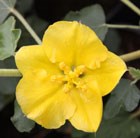
flannel bush £14.99
Position: full sunSoil: poor to moderately fertile, well-drained, neutral to alkaline soilRate of growth: fast-growing Flowering period: May to OctoberHardiness: frost hardy (needs winter protection)Eyecatching, saucer-shaped, buttercup-yellow flowers appear from May to October among lobed, dark green leaves. This long-flowering, evergreen shrub provides a pretty backdrop for a shrub or mixed border, especially among other hot colours. A particularly vigorous variety, it's best grown against a warm, sunny wall, sheltered from cold, drying winds.Garden care: Wear stout gardening gloves and protective goggles when handling this plant, as contact with the foliage and shoots can cause skin irritation. In late winter or early spring remove any misplaced, diseased or crossing branches. Apply a generous 5-7cm (2-3in) mulch of well-rotted garden compost or manure around the base of the plant after pruning.
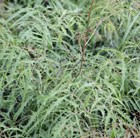
Goats beard £12.99
Position: full sun or partial shadeSoil: moist, fertile soilRate of growth: average Flowering period: June and July Flower colour: creamy-whiteHardiness: fully hardyMasses of tiny, creamy-white flowers on arching, wiry stems in June and July and finely divided, fern-like, mid-green leaves. This attractive summer-flowering perennial flourishes in moist soil in sun or partial shade. More compact than the species Aruncus dioicus, it's particularly suitable for small gardens or where border space is limited.Garden care: Cut back the flowered stems back hard to just above ground-level in autumn and apply a generous mulch of well-rotted garden compost or manure around the base of the plant

rootgrow £10.99
This is the first and currently the only plant or soil treatment to be licensed by The Royal Horticultural Society.RHS Gardeners find plants treated with Rootgrow Have superior plant establishment with better natural vigour Overcome re-plant problems more successfully Have better developed root systems Are better able to cope with conditions of drought A single application of Rootgrow will support a plant for its entire lifetime.How do mycorrhizal (pronounced my-cor-y-zal) fungi benefit plants?In its simplest sense mycorrhizal fungi do everything plant roots do, just better. When new plants are planted with Rootgrow it takes only 2-4 weeks under normal conditions for these fungi to start benefiting plants. In that time they attach themselves to the plant's root system and grow out rapidly into the soil, searching for nutrients and water. They essentially become part of the plant's own root system. The benefits to plants are; Better nutrient uptake. These fungi are so much thinner and finer than the plant's own roots they can therefore find nutrients in the soil far more efficiently than the plant's own coarse roots. They are especially good at finding nutrients responsible for flowering and fruiting such as Phosphorus and Potassium. As they can explore a much greater amount of soil than the plant's own roots they are also far more likely to find trace elements and the rare nutrients that all plants need to grow well. Drought toleranceMycorrhizal fungi are an essential part of a plant's ability to combat drought. Leaves and stems have developed mechanisms to combat drought such as silver leaves, waxy leaves and hairy leaves but these adaptations on their own aren't enough if the plant doesn't have its friendly fungal partner on its roots. Mycorrhizal fungi hold onto water in soils like a sponge. Establishment in difficult soils Mycorrhizal fungi will enable plants to establish and thrive even in difficult soils. In poor sandy soils the mycorrhizal fungi will be able to find scarce nutrients and hold onto water. In clay soils these fungi will be able to unlock nutrients from the soil acting like a clay breaker.Useage Guidelinesfor a 9cm pot use 5 grams of rootgrow (a 360 gram sachet will cover approx. 72 plants)or a 2-3 litre pot use 25 grams of rootgrow (a 360 gram sachet will cover approx. 18 plants)or a 4-5 litre rose use 50 grams of rootgrow (a 360 gram sachet will cover approx. 9 plants)or a 10-15 litre Tree use 50 grams of rootgrow (a 360 gram sachet will cover approx. 5 plants)
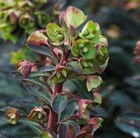
wood spurge £9.99
Position: full sun or partial shadeSoil: well-drainedRate of Growth: averageFlowering period: May to JuneHardiness: fully hardyThis small euphorbia has attractive deep maroon-purple foliage that grows in rosettes along erect stems which contrast brilliantly with the bright lime-green flowers that appear from March to May. A sport of the popular variety 'Redwing', it forms attractive mounds of evergreen foliage which colours best in full sun. It looks good in winter containers with spring bulbs and winter pansies, or towards the front of a mixed border with yellow flowers or plants with bright green foliage. This plants recently won a prestigious Gold Medal at the Plantarium Exhibition in The Netherlands. Garden care: After flowering remove the faded flowerheads. When working with spurges always wear gloves since the milky sap is poisonous and a potential skin irritant.
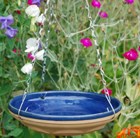
glazed-terracotta-hanging-bird-bath £9.99
This attractive ceramic bird bath provides a decorative source of drinking and bathing water for birds. It can be used on the ground, hanging from a bracket from a feeding station. It is frost resistant with glazed interior hanging from a bracket from a feeding station. It is frost resistant with glazed interior and is supplied with a heavy duty and is supplied with a heavy duty galvanised chain.Size – 28cm diameter bowl
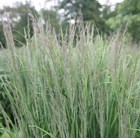
feather reed grass £9.99
Position: full sun or partial shadeSoil: dry or wet, well-drained soilRate of growth: fast growingFlowering period: early summer to autumnHardiness: fully hardyA stiff, erect habit is the defining feature of this grass, named after the famous German plantsman who introduced it to the public in the 1950s. Plant it en masse to form a feathery screen, or in small groups to add height and definition to a perennial border. It also looks good planted next to buildings. This is one of the earliest perennial grasses to get going, with shoots appearing in early spring, followed by flowers that are green first, then fade to buff.Garden care: Very low maintenance, it simply needs to be cut down to the ground in February. Dont be tempted to chop it earlier, as its wheat-coloured stems add drama and strong winter presence to the garden.
rose (shrub) £8.99
plantain lily £8.99
purple moor-grass £7.99
flowering rush £7.99
paeony / peony £6.99
coneflower £6.99
Dahlia £6.99
michalmas daisy £5.99
round-headed leek £5.99
Siberian iris £5.99
sage £5.99
thyme £4.99
perennial wallflower £4.99






